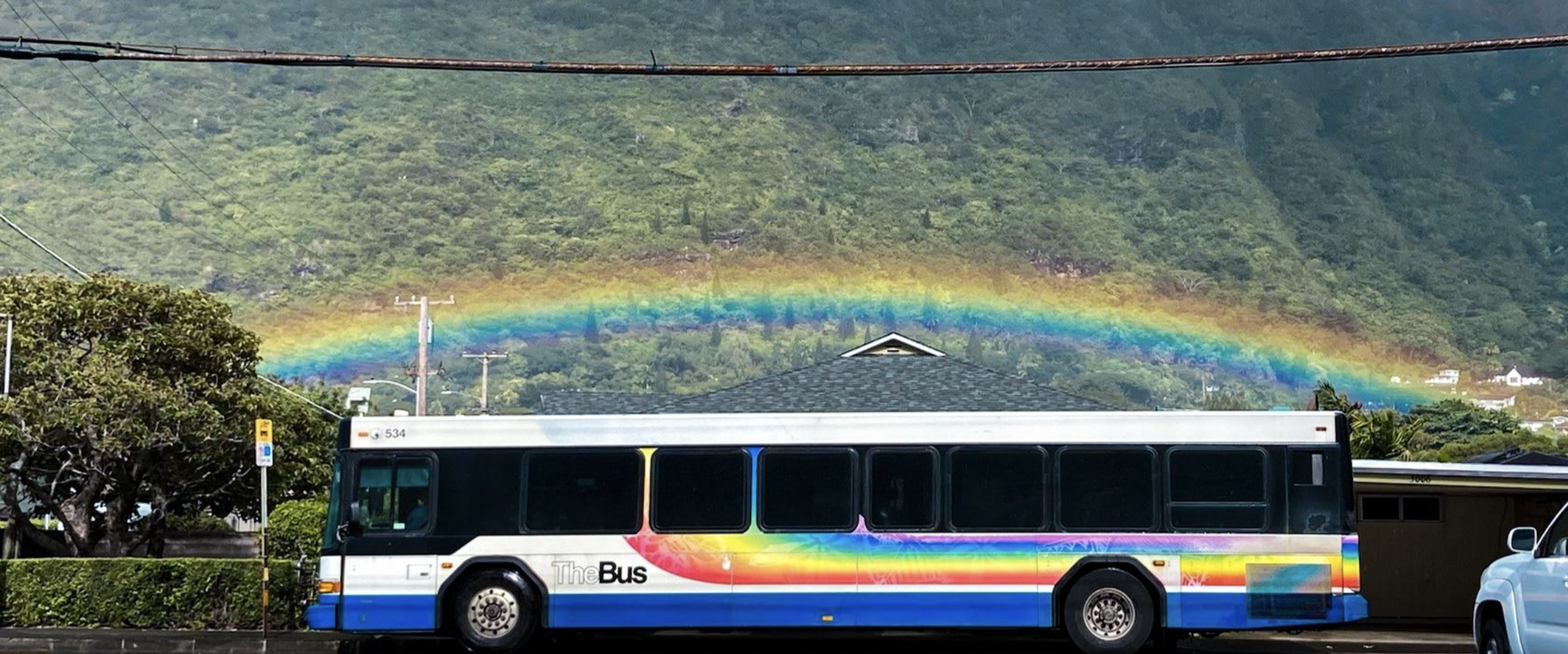The Hawaii State Climate Commission has released three new reports detailing clean transportation investments that promote walking, biking, rolling, and transit across the state, as an integral component to help Hawaiʻi address its climate emergency. Although the electrification of transportation remains an important factor in addressing energy and climate challenges, reducing car travel (or vehicle-miles traveled) through improved clean transportation choices is also an essential strategy.
“We have a historic opportunity to collaborate and invest in more transportation choices across Hawaiʻi with our state and local county partners. The reports help illuminate how we can move forward together, our understanding of these issues, and what types of investments deliver the greatest impacts towards our clean energy goals”, said Department of Land and Natural Resources Chairperson Dawn Chang, who also chairs the Climate Commission.
The following reports are released highlighting how investments in Hawai‘i’s transportation and land-use system impact whether the state meets its climate goals:
- Investing in Transportation Choices: Recommendations for Safe, Sustainable, Affordable and Reliable Mobility
- Drivers of Vehicle Miles Traveled (VMT) and Priority Reduction Strategies for Hawaiʻi
- Roadway Expansion and Vehicles Miles Traveled

Investing in Transportation Choices includes recommendations for policies, strategies, and near-term actions to help reduce the need for car travel. These seven recommendations call for setting short- and long-term targets, increased governmental agency collaboration, more alignment with land use plans, stronger project-level analyses and tools, greater resources for VMT-reducing projects, delivering on an active transportation network, and helping explain why expanded transportation choices and investing in them are so important to the state’s climate, health, and equity goals. “Transportation costs are the fourth-largest expense for Hawaiʻi residents, so it makes sense to invest in ways to increase choices to make it safer and easier to get around,” said Mark B. Glick, Hawaiʻi Chief Energy Officer. “This is an opportunity to save households as much as $41,000 a year while reducing carbon emissions and supporting active and healthy lifestyles.”

Drivers of Vehicles Miles Traveled and Priority Reduction Strategies for Hawaiʻi analyzes recent trends in car travel. Between 2009 and 2017, total vehicle miles traveled increased by 7.8% percent with some interesting observations:
- Rural household car travel is growing the fastest – possibly due to an absence of robust transportation choices.
- Commercial activity travel, such as freight, tourism, and deliveries, account for 15% and are likely to grow.
- 70% of personal trips are under five miles and account for 15% of vehicle miles traveled – this means that many trips are ripe for new modes if they are safe and accessible.
Although transportation choices may be different in different contexts, this work underscores several opportunities and bright spots in Hawaiʻi.

Roadway Expansion and Vehicle Miles Traveled applies RMI’s (formerly the Rocky Mountain Institute) SHIFT tool – a nationwide calculator to enable users to estimate long-term impacts of roadway expansion projects in
Hawaiʻi. As of 2022, nine planned road-widening projects would add an additional 38 lane-miles to the state’s roadways. Using RMI’s SHIFT tool these projects are estimated to add an additional 144 million vehicle miles traveled, the equivalent of an additional 11,100 cars on the road and 1.65 MMT CO2e or 19% of the state’s total transportation emissions. Without careful evaluation and mitigation in design, these new roads and lanes make it that much harder to meet our climate goals.
These reports can be found on the State Climate Commission website here:
- Climate Change Portal | Transportation Choices
- Climate Change Portal | Oʻahu Mobility Hub Study
- Climate Change Portal | Roadway Expansion and Vehicles Miles Traveled


